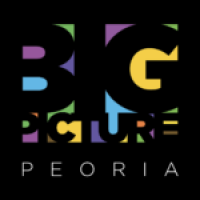Ideas are Water
by Adeline Ferolo
Ideas are water. Sparkling crystals dance across the surface of a lake, bobbing up and down in synchronous movement following the rhythm of the waves. Looking at it now it seems like a hallucinatory, kaleidoscopic invention. But it’s just water. Billions of tiny water molecules each consisting of two hydrogen atoms and one oxygen atom—that’s it. Yet this substance controls the fate of the existence of life on our planet, giving birth to the natural wonders of the world. It’s mesmerizing that a substance can produce the most beautiful scenes, but also hold the power to destroy anything in the blink of an eye.
Blink. My thoughts flow back to reality. My mind always wanders when reading factual material, connecting existential ideas to seemingly meaningless content necessary to pass a biology test. For instance, when taking said test, ideas, thoughts, imaginary situations, and other theories always cascade through my mind. Our ideas and thoughts are born in moments, in reaction to the volatile outside world—possibly leading to something unimaginable.
Bu-dum Bum. My anxiety starts to surge from this unexpected sound. A mechanical pencil now lays below my feet. I grab it, looking up to return it to whoever dropped it. I’m greeted with a nonchalant “Thanks” from a stranger staring down at me. A sudden burst of butterflies flutters throughout my stomach. The brain can latch onto this single thought, distracting from biology homework and instead focusing on every other person in the room… “Oh God!” The power of thought controls our lives, whether invited or not.
One single thought. One single drip. Suddenly, water is seeping in from the floorboards of my mind. How untimely, annoying, and completely obtrusive to everyday life. Water belongs in bathtubs and showers, not on the floorboards. Water should help my plants grow—contained in pots and outdoor fields. What is water doing here? Look at the stained carpet, the soggy t-shirt hiding underneath my dresser, and the wrinkled pillowcases. Now I must stop my work in the middle of the day to tend to this mental mess. Puddles and puddles of unresolved thoughts.
Ding, di-ding. I silence my phone and place it face down on my desk. The wave of emotions starts to recede, pulling me back to biology class—but even this is fleeting, as my thoughts begin to wander again. Is the stranger still mad at me? I still remember the first time we met—via mechanical pencil. My thoughts begin to wade through all the possible situations. A simple auditory cue has sprouted seeds of poison ivy determined to wrap its vines around my thoughts, twisting and contorting them to its desire. I can’t get rid of them. The harder I try to ignore them, the longer and more powerful they grow.
Time whirls by and I haven’t picked up on a single sentence of anything the teacher has said. I didn’t ask for it to happen. It was so beautiful in the beginning—but now it is all gone in a matter of milliseconds.
Ideas are water.
About Adeline Ferolo

Stories, arguably, are the most underrated form of currency that floods the digital world, through highlighted Instagram posts and viral YouTube videos. As a rising senior at Richwoods High School, Adeline Ferolo aims to express herself and the issues closest to her authentically through engaging, storytelling, and other mediums. She is a competitively academic student. Her interests range across many creative outlets—as an active writer for the Richwoods Shield, the monthly school newspaper, and as a contributor to the youth-led blog EnviroWrite, which explores rising environmental concerns. Recently she has discovered her passion for the medium of film after attending the National High School Institute summer program at Northwestern University, where she had previously studied creative-intensive subjects ranging from sustainable architecture to graphic design. Within the past year, she has focused her efforts on exploring the visual medium in both her academic and personal life, opting to create experimental videos for class projects and continuing to explore different aspects of the visual language.

